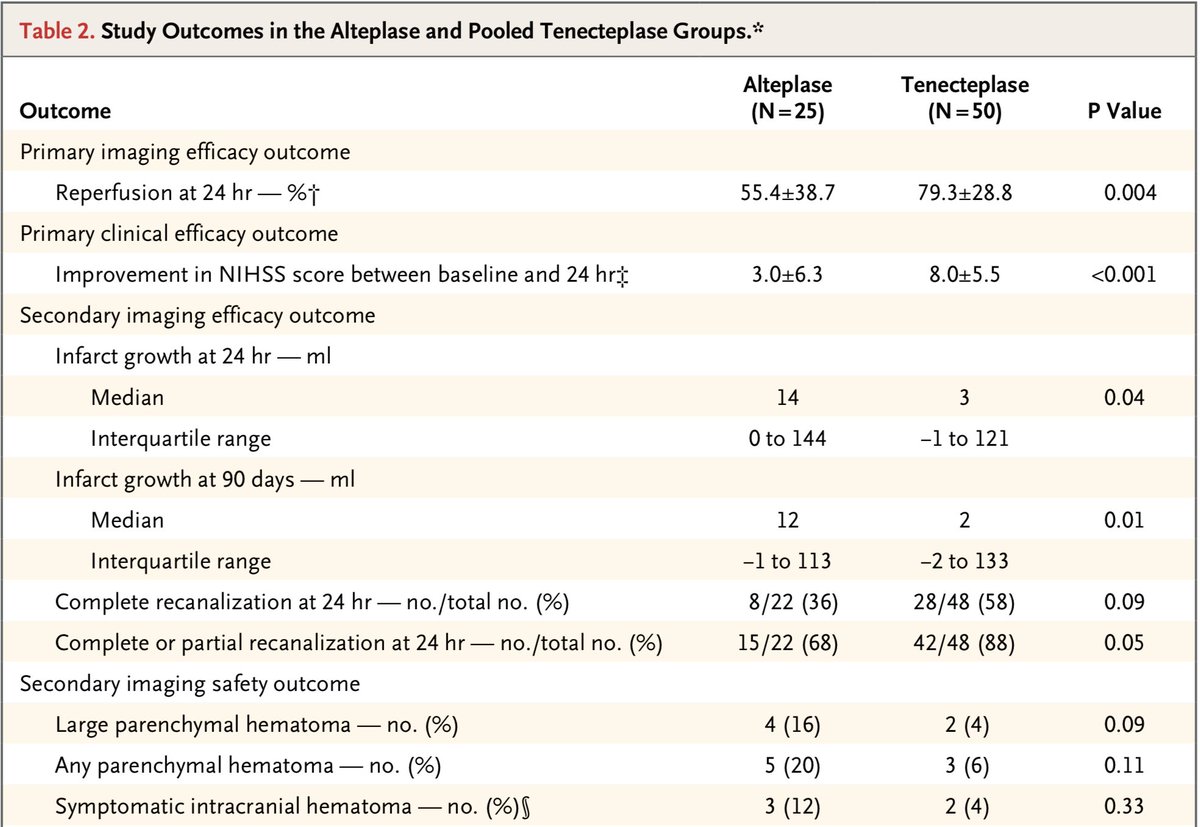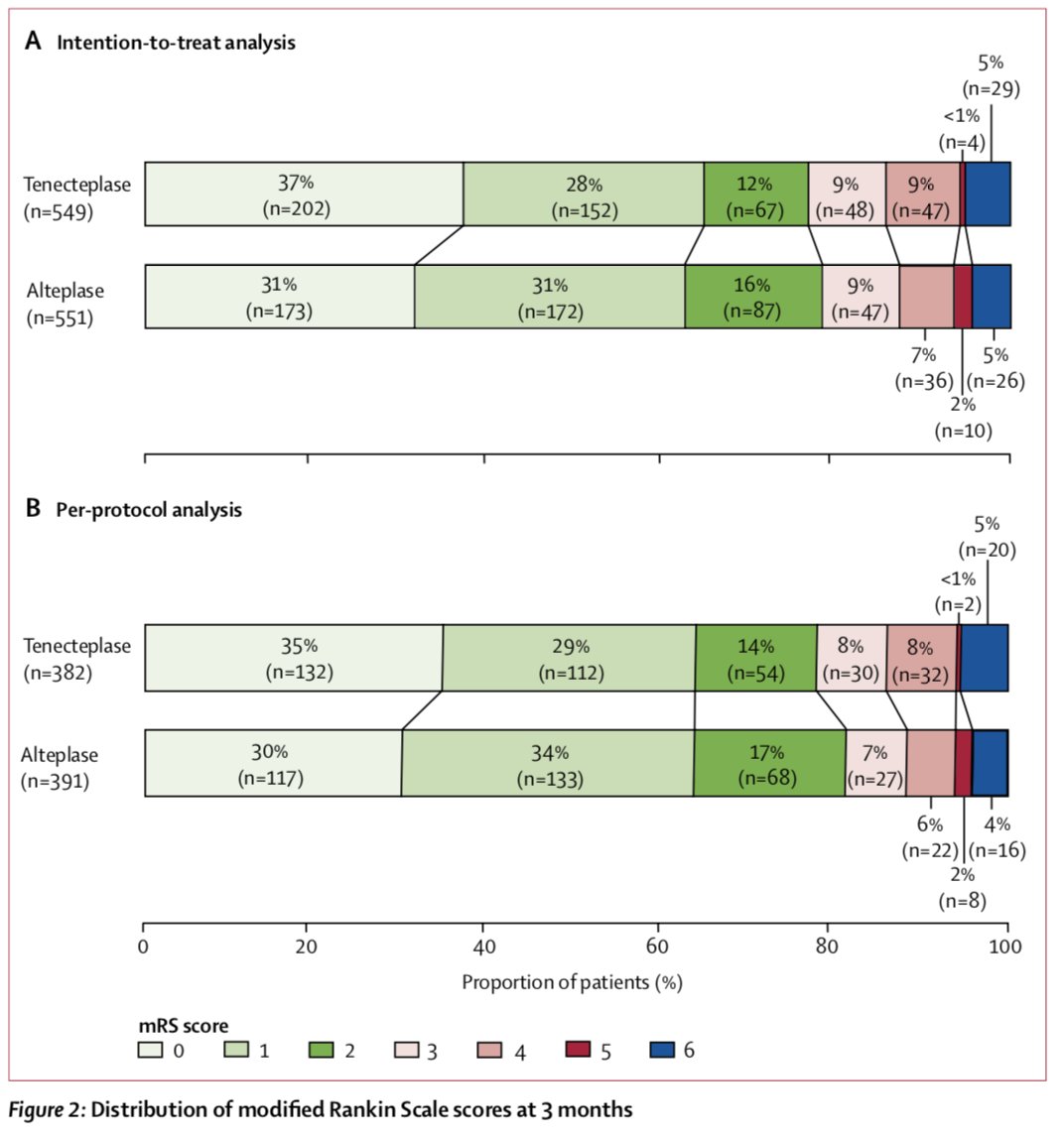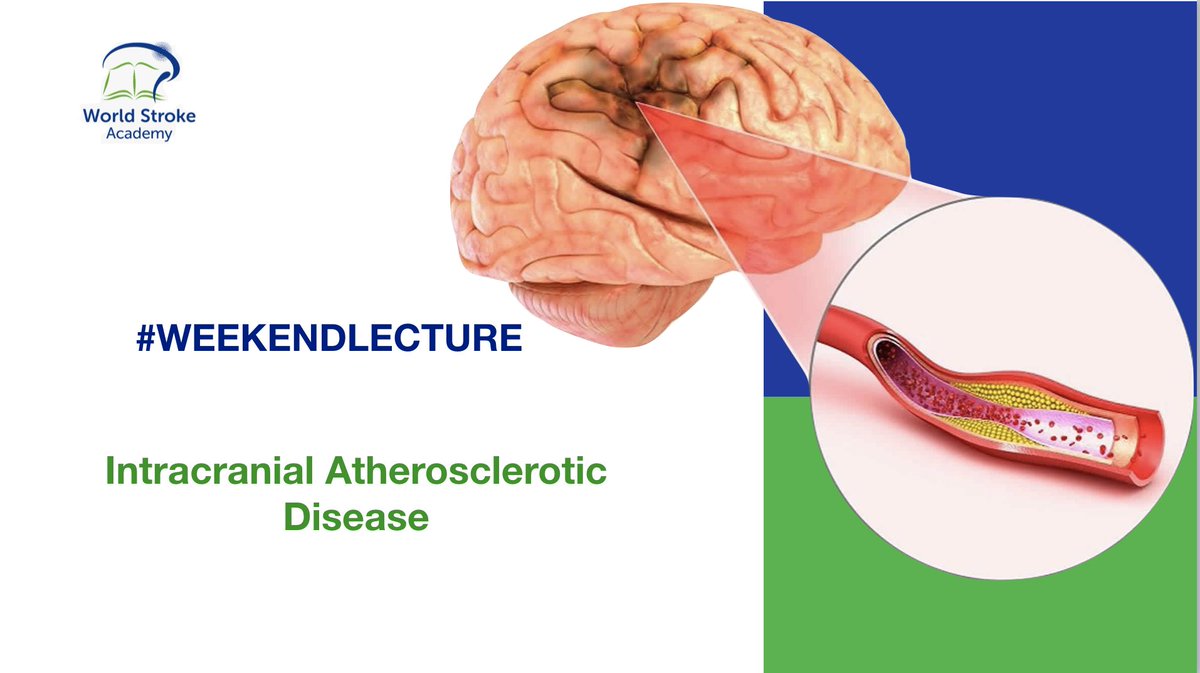
#WeekendLecture
#Tenecteplase #TNK
Part 1
✅3rd generation rtPA
🧬Targeted genetic upgrade
3 specific alterations to #alteplase molecule:
👉⬆️Half life
👉⬆️Binding affinity for #fibrin
👉⬆️Resistance to inactivation by #PAI-1
bit.ly/3pqbEb1
#Tenecteplase #TNK
Part 1
✅3rd generation rtPA
🧬Targeted genetic upgrade
3 specific alterations to #alteplase molecule:
👉⬆️Half life
👉⬆️Binding affinity for #fibrin
👉⬆️Resistance to inactivation by #PAI-1
bit.ly/3pqbEb1

#WeekendLecture
#TNK
👉⬆️T1/2 allows single bolus dosing and⬆️clot exposure to TNK
👉Higher affinity to fibrin-rich clots & + potent/faster clot #lysis vs alteplase
👉 < consumption of fibrinogen/plasminogen/ a2- antiplasmin👉⬇️systemic fibrinolytic effect👉⏬risk for bleeding
#TNK
👉⬆️T1/2 allows single bolus dosing and⬆️clot exposure to TNK
👉Higher affinity to fibrin-rich clots & + potent/faster clot #lysis vs alteplase
👉 < consumption of fibrinogen/plasminogen/ a2- antiplasmin👉⬇️systemic fibrinolytic effect👉⏬risk for bleeding

#WeekendLecture
#TNK
First analysis in stroke patients was a #dose-scalation safety study
There was no #symptomatic ICHs in dosis of 0.1-0.2-0.4mg/kg, and 15% (2 of 13) in 0.5mg/kg
No differences in clinical outcomes
bit.ly/3DNHamV

#TNK
First analysis in stroke patients was a #dose-scalation safety study
There was no #symptomatic ICHs in dosis of 0.1-0.2-0.4mg/kg, and 15% (2 of 13) in 0.5mg/kg
No differences in clinical outcomes
bit.ly/3DNHamV


#WeekendLecture
#TNK
In #ISC 2008 @carlosmictusvh @marcriboj et al showed their experience with #TNK (0.4mg/kg) vs alteplase in 122 patients
TNK 👉better early recanalization rates & clinical outcomes at 3m
Rates of sICH were similar in both groups
#TNK
In #ISC 2008 @carlosmictusvh @marcriboj et al showed their experience with #TNK (0.4mg/kg) vs alteplase in 122 patients
TNK 👉better early recanalization rates & clinical outcomes at 3m
Rates of sICH were similar in both groups

#WeekendLecture
#TNK
2009, Prospective #nonrandomized study
0.1mg/kg dose
3-6hr after onset
👉better recanalization vs alteplase
☝️Criteria for TNK treatment included a perfusion lesion at least >20% than core, with an associated vessel occlusion
bit.ly/3viFdMt
#TNK
2009, Prospective #nonrandomized study
0.1mg/kg dose
3-6hr after onset
👉better recanalization vs alteplase
☝️Criteria for TNK treatment included a perfusion lesion at least >20% than core, with an associated vessel occlusion
bit.ly/3viFdMt

#WeekendLecture
#TNK
2010, Multicentric RCT
👉0.1-0.25-0.4mg/kg vs alteplase
☝️Stopped for slow enrollment
👉15.8% (3 of 19) symptomatic ICH in 0.4mg/kg dose
✅No differences in outcomes vs alteplase
bit.ly/3aJ5Mko

#TNK
2010, Multicentric RCT
👉0.1-0.25-0.4mg/kg vs alteplase
☝️Stopped for slow enrollment
👉15.8% (3 of 19) symptomatic ICH in 0.4mg/kg dose
✅No differences in outcomes vs alteplase
bit.ly/3aJ5Mko


#WeekendLecture
#TNK
2012, phase 2B trial @NEJM
👉0.1 and 0.25mg/kg doses (no 0.4 based on 2010 trial) vs alteplase
👉<6hr, nihss>4
☝️perfusion & arterial imaging
✅Better reperfusion & clinical outcomes
☝️Results suggested⬆️efficacy of TNK 0.25 mg/kg
bit.ly/3FXFpFV
#TNK
2012, phase 2B trial @NEJM
👉0.1 and 0.25mg/kg doses (no 0.4 based on 2010 trial) vs alteplase
👉<6hr, nihss>4
☝️perfusion & arterial imaging
✅Better reperfusion & clinical outcomes
☝️Results suggested⬆️efficacy of TNK 0.25 mg/kg
bit.ly/3FXFpFV

#WeekendLecture
#TNK
#ATTEST phase 2
Goal: efficacy/safety of #TNK in a wider stroke population not restricted by #neuroimaging criteria like prior trials, vs alteplase
<4.5hr
0.25mg/kg
✅No difference in % of salvaged penumbra neither clinical outcome
bit.ly/3ARabMS


#TNK
#ATTEST phase 2
Goal: efficacy/safety of #TNK in a wider stroke population not restricted by #neuroimaging criteria like prior trials, vs alteplase
<4.5hr
0.25mg/kg
✅No difference in % of salvaged penumbra neither clinical outcome
bit.ly/3ARabMS



#WeekendLecture
#TNK
2016, authors from several of this trials undertook an individual patient data meta-analysis @IntJStroke
TNK 0.25 was associated with:
✅greater odds of early major neurological improvement
✅a trend for better functional outc at 3m
bit.ly/3j7ssPJ

#TNK
2016, authors from several of this trials undertook an individual patient data meta-analysis @IntJStroke
TNK 0.25 was associated with:
✅greater odds of early major neurological improvement
✅a trend for better functional outc at 3m
bit.ly/3j7ssPJ


#WeekendLecture
#TNK
#NOR_TEST 2017
The Norwegian Tenecteplase Stroke Trial
PROBE, phase 3, 13 SU in Norway
1100pts
🔹TNK 0.4mg/kg vs alteplase
✅<4.5hr from onset or DWI/FLAIR mismatch in WUS
👉TNK was not superior to alteplase
👉Similar safety profile
bit.ly/3jdxAlz

#TNK
#NOR_TEST 2017
The Norwegian Tenecteplase Stroke Trial
PROBE, phase 3, 13 SU in Norway
1100pts
🔹TNK 0.4mg/kg vs alteplase
✅<4.5hr from onset or DWI/FLAIR mismatch in WUS
👉TNK was not superior to alteplase
👉Similar safety profile
bit.ly/3jdxAlz


#WeekendLecture
#TNK
Here concludes this Part 1 of #Tenecteplase lecture
Next week we will cover #Extend_Ia_TNK , role of TNK during pandemic times, ongoing trials, etc
Stay tuned!
Meanwhile you can check this 2018 review with trials we just posted : journals.sagepub.com/doi/10.1177/17…
#TNK
Here concludes this Part 1 of #Tenecteplase lecture
Next week we will cover #Extend_Ia_TNK , role of TNK during pandemic times, ongoing trials, etc
Stay tuned!
Meanwhile you can check this 2018 review with trials we just posted : journals.sagepub.com/doi/10.1177/17…

• • •
Missing some Tweet in this thread? You can try to
force a refresh
























